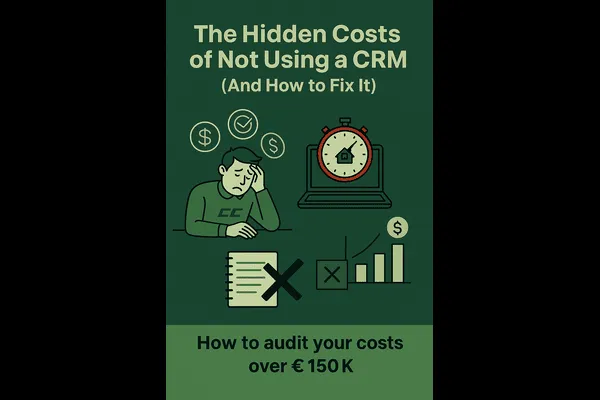
The Hidden Costs of Not Using a CRM (And How to Fix It)
Most real estate investors get into the business to make money and gain freedom not to spend their days chasing paperwork, retyping texts, or trying to remember who they last talked to.
And yet, many investors especially those just starting out resist investing in systems like a CRM (Customer Relationship Management software), thinking they’re saving money.
But here’s the truth: not using a CRM is costing you far more than you realize.
Let’s break it down.
Mental Bandwidth: You’re Your Own Bottleneck
If your entire follow-up system lives in your head, it’s only a matter of time before something slips. Trying to remember:
Which buyers are interested in what types of deals
Who made offers and when
Which sellers you still need to follow up with
What the last text or call said
…turns your brain into a full-time file cabinet. That mental clutter isn’t just tiring — it creates drag on every part of your business.
You’re not making strategic decisions. You’re just trying not to forget anything.
Time Drain: Manual = Slow
Investors often say, “I don’t need a CRM, I’ve got my spreadsheet system.” And while spreadsheets can track things, they can’t:
Automatically send texts or emails
Log calls and updates in real time
Trigger follow-ups when someone replies or ghosted
Organize buyer feedback at scale
That means you’re spending hours on tasks a CRM could automate. That time could’ve been spent locking up new deals or simply not working late every night.
Your deal flow shouldn’t stop when you get busy. With the right system, it won’t.
Missed Opportunities: The Real Price Tag
Let’s say you forget to follow up with a hot buyer they find another deal. Or you lose track of a seller who was close to signing — now they’ve ghosted.
How much does that cost you?
One missed wholesale assignment = $10,000+
One dropped buyer = hundreds of thousands in lifetime deal flow
A broken follow-up system = a reputation for being disorganized
You’re not just “losing time.” You’re leaking revenue.
And if you’re spending hours on follow-up, dispo, or data entry instead of doing what actually grows the business, talking to sellers, locking deals, building your network, then you’re trading opportunity for admin work.
The “Cheap” Route is Actually Expensive
Many investors hesitate to pay for a CRM because of the monthly subscription cost.
Let’s put that in perspective:
A CRM like Closer Control might cost you $297/month
That’s $9.90/day
One extra deal a month, or even every few months more than pays for it
But if you’re not using a CRM, you’re likely losing more than one deal per month from disorganization, delays, or dropped follow-ups.
You’re trying to save $297, but it’s costing you thousands.
How a CRM Like Closer Control Fixes It
Closer Control isn’t just a contact list. It’s a deal-closing machine.
Here’s what it actually helps you do:
Automate your follow-up — Never forget to text or call again
Tag and segment your buyers — Send the right deals to the right people
Track all communication — See exactly where each conversation left off
Centralize your dispo process — Offers, interest, contracts all in one place
Stay consistent — Even when you’re busy, the system keeps working
It’s the difference between guessing and knowing in between scrambling and scaling.
Your Business Deserves Better Systems
If you’re serious about wholesaling, fix-and-flips, or any investing at scale, the answer is not to work harder. It’s to systemize smarter.
The right CRM doesn’t just help you close more, it gives you the clarity and capacity to run your business like a real business.
Because the real cost of not having a CRM isn’t $297/month.
It’s $10K deals that slip away again and again.
Ready to Stop Losing Deals to Chaos?
Try Closer Control today and see how quickly your business changes when your process stops relying on memory and starts running on systems.